CCL: Comercio electrónico crecerá 15% movilizando US$2,300 millones
El comercio electrónico en el país crecería un 15% al cierre del año y movería unos US$2.300 millones, proyectó Jaime Montenegro, analista de comercio electrónico de la Cámara de Comercio de Lima (CCL).
“Según un estudio de Visa, en dos años se espera que en el Perú las ventas por internet alcancen los US$2.500 millones gracias a la apuesta de más empresas por este canal de ventas”, anotó durante el E-Summit, cita de de negocios digitales organizada por la CCL.
Si bien el Perú ocupa el sexto lugar en cuanto a comercio electrónico en la región -detrás de Brasil, México, Argentina, Chile y Colombia- su despegue ha sido muy acelerado en los últimos años y lo sería aún más gracias al canal móvil, apunta el gerente para Chile, Panamá y Perú de PayU, Rafael Hospina.
“Si bien hay factores macroeconómicos que crecen a menor ritmo, no frenan el avance del comercio electrónico, segmento en el que cada vez más empresas con presencia offline deciden incursionar en el online a fin de ganar más clientes y posicionarse antes que el resto”, detalla.
Y este ingreso de más comercios al canal online es un fenómeno que ha se ha ido expandiendo también en provincias, agrega Montenegro. “Las provincias representan alrededor del 50% de las operaciones de compra online en el país. Ciudades como Cusco, Arequipa, Huancayo, Chiclayo, Piura y Trujillo se reparten gran parte de la torta y más ciudades van incorporándose”, explica.
¿Qué sectores son los que registran un mayor dinamismo en ventas? Según el ejecutivo de la CCL, si bien el rubro turístico se corona en número de transacciones, hay un gran potencial para los comercio minoristas y de muchas más, pues a través del e-commerce se pueden adquirir desde frutas -a través de las tiendas virtuales de supermercados- ropa, hasta artículos de tecnología.
“El abrir un canal online tiene un impacto muy grande porque hay muchos usuarios que navegan en Internet que compran o investigan antes de hacer una adquisición”, apunta.
DATO
► Ticket promedio de las compras por comercio electrónico es de entre S/200 y S/300.
Publicado el Martes, 29 de Marzo del 2016
Prominent Hedge Fund Luxor Capital Warns Redeeming Investors Will Be "Gated" After Sharp Losses
Submitted by Tyler D.
03/29/2016 - 08:09
About a decade ago, Christian Leone's Luxor Capital was one of the biggest brand names in the industry, and alongside Harbinger and DB Zwirn, every trader and analyst on Wall Street wanted to work there. Since then things have changed. According to Reuters, Luxor, which had $3.8 billion under management at last check, "has been losing money for months" and on Monday it surprised investors when it announced it would "not be returning exiting investors cash in full, keeping a portion locked up until some illiquid investments can be sold."
SunEdison Plummets 40% On "Substantial Bankruptcy Risk" Warning
Submitted by Tyler D.
03/29/2016 - 08:29
Just as we warned was likely, the once infamous hedge fund hotel US solar company SunEdison unit TerraForm Global said on Tuesday there was "substantial risk" that SunEdison would soon seek bankruptcy protection given liquidity difficulties, noting that "such an action would have a material adverse effect” on TerraForm Global. In 2016 alone, SUNE has collapsed from a hope-strewn $6 price to just 73c this morning...
Se fue ''Nano'' y ya solo quedan 10
Nano Guerra renunció a su candidatura presidencial.
Nano Guerra renunció a su candidatura presidencial. " Fuente: Andina
La alianza Solidaridad Nacional–UPP decidió esta tarde retirar la candidatura de Nano Guerra García tras una reunión de varias horas. Debido a que hubo un acuerdo entre las partes, él "acató la decisión" con tranquilidad, confirmaron fuentes de El Comercio.
La decisión se tomó esta tarde después de una reunión de varias horas en la que participó el Comité Ejecutivo Nacional (CEN) de Solidaridad Nacional; el presidente de UPP, José Vega Antonio; y el ahora ex candidato Nano Guerra García.
De acuerdo al más reciente simulacro de votación de Ipsos, Nano Guerra García tiene 0,9% de intención de voto. Según la última encuesta de CPI, Solidaridad Nacional alcanza apenas 3,2% de intención de voto.
De los 19 postulantes anunciados inicialmente, 9 ya no siguen en carrera. Han renunciado, además de Nano Guerra, Francisco Diez Canseco (Perú Nación), Yehude Simon (Partido Humanista), Vladimir Cerrón (Perú Libertario), Renzo Reggiardo (Perú Patria Segura) y Felipe Castillo (Siempre Unidos). Asimismo, el Partido Nacionalista Peruano decidió retirar la candidatura de Daniel Urresti. En tanto, por distintos motivos, el JNE dejó fuera de las elecciones a César Acuña (Alianza para el Progreso del Perú) y Julio Guzmán (Todos por el Perú).
Publicado el Martes, 29 de Marzo del 2016
Martes 29/03/16 Indice de las casas, Confianza consumidor
Re: Martes 29/03/16 Indice de las casas, Confianza consumido
Mañana se definen apelaciones contra Keiko y casos de Vladimir Huaroc y Carmen Omonte
Publicado el Martes, 29 de Marzo del 2016
WTI Crude Tumbles Into 'Correction' To 2-Week Lows
Tyler D.
03/29/2016 09:03 -0400
The greatest short-squeeze on record is over and now the great global oil glut in history, largest inventories since The Great Depression, and global growth demand collapsing fundamentals are being priced back in. WTI Crude is now down 10% from its highs a week ago, back to near 2-week lows and near a $37 handle.
Can we just get another random 'Doha' meeting headline...
Case-Shiller Home Prices Jump Driven By West Coast Chinese Buyers
Submitted by Tyler D.
03/29/2016 - 09:19
US Home prices rose 5.75% YoY according to Case-Shiller (the fastest rate since July 2014) as it appears the Chinese buyers are migrating south from Canada with Portland, Seattle, and San Francisco reported the highest year-over-year gains among the 20 cities with another month of double digit annual price increases. Home prices continue to climb at more than twice the rate of inflation amid a suply shortage as West Coast propertty markets become "Vancouvered."
Commodities Longs Will "Liquidate In Unison," Driving Bulls Off A Cliff, Barclays Warns
Tyler D.
03/29/2016 09:36 -0400
"Energy needs lower prices to maintain financial stress to finish the rebalancing process; otherwise, an oil price rally will prove self-defeating as it did last spring,” Goldman’s Jeffrey Currie recently wrote, on the outlook for crude going forward.
The rally off the lows has largely stemmed from the market’s hopes for an output freeze from Russia, the Saudis, and everyone else who isn’t Iran. Producers will meet in Doha next month to try and hammer out an agreement, but as we’ve documented exhaustively, the whole effort is farcical at best.
Moscow and Riyadh (among others) are already pumping at record levels, and it’s not at all clear why “freezing” output at all time highs is bullish. Indeed, as we noted last week, Russian crude exports are set to rise going forward. "The discussion is only about freezing production. And not exports,” Russian Energy Minister Alexander Novak told reporters earlier this month.
Throw in the fact that a recalcitrant Iran is in no mood to freeze anything now that international sanctions have finally been lifted and you have a decidedly bearish fundamental backdrop for crude, and that, in turn, should be expected to pressure the rest of the commodities complex which has for years struggled to deal with slumping Chinese demand and a global deflationary supply glut.
For their part, Barclays thinks the bullish sentiment around commodities could shift abruptly in the not so distant future, leading the “herd” straight off a cliff.
“Investors have been attracted to commodities as one of the best performing assets so far in 2016,” analyst Kevin Norrish begins. “However, in the absence of any concerted fundamental improvements, those returns are unlikely to be repeated in Q2, making commodities vulnerable to a wave of investor liquidation that we estimate could, in a worst case scenario, knock as much as 20- 25% from current price levels.” Here’s more:
Given that recent price appreciation does not seem to be very well founded in improving fundamentals and that upward trends may prove difficult to sustain, the risk is growing that any setback will result in a rush for the exits that could again lead commodity prices to overshoot to the downside.
Key commodities markets such as oil and copper already face overhangs of excess production capacity and inventories, but also now face another obstacle in the recovery process, that of positioning which is now approaching bullish extremes.
Net flows into commodity investor products totaled over $20bn in January-February (the strongest start to a year since 2011), futures positioning in key markets such as copper and oil has switched rapidly from bearish to bullish extremes in a few short weeks and there is evidence of a surge in investment flows into Chinese commodity markets as well.
The risk for commodities is that investors seek to liquidate long positions quickly and in unison, with potentially highly negative consequences for prices. There are several reasons to believe that a short-term turning point for investor flows might be close.
First, the kind of commodity investment that is taking place currently is not the long-term buy- and-hold strategy for portfolio diversification and inflation protection that underpinned the huge inflows of the previous decade. It is much more short term and opportunistic, as is clear from the relatively short holding period for ETP buyers in oil. Many have been liquidating on the recent move up in prices, having held their positions for only 5-6 weeks.
Second, commodities are among the few assets that have generated a positive return in Q1 and, as quarter-end approaches, that may make investors keener than they would usually be to close out long positions and lock in profits.
Third, the risk rally set in place by the previous week’s more dovish-than-expected FOMC statement is already starting to fade, as several Fed policymakers came out last week with more hawkish statements. Part of the problem with recent Fed-driven risk rallies is that they most often result from a run of poor economic data usually for the US, though recent Fed comments suggest it is becoming increasingly conscious of the growth path in emerging markets as well. Unfortunately, that means that any commodity price gains that result tend to be transitory because they are not supported by any underlying improvement in demand fundamentals; that seems to be the case again this time.
“How bad could it get?,” Barclays asks? “A very simple analysis of the relationship between investor positioning and recent price movements in oil suggests the potential for a 20-25% move down in prices if positioning were to return to the average levels of the past few months. The potential downside in copper is similar,” the bank says, answering its own question.
So that puts copper in “the low $4,000s” and as for crude, we’re looking at the low $30s. In short, still suppressed demand, quarter-end profit taking, and the possibility that the Fed will turn more hawkish thus curtailing risk appetite and sparking a USD rally could cause a violent reversal. And as we noted just this morning, things are already starting to unravel:
But don't worry, as long as everyone gathered in Doha next month agrees to freeze production at the current record-setting pace which, if it keeps up, will soon result in every backyard swimming pool in the world being filled to the brim with black gold, everything should be fine.
For those who need a visual of where Barclays thinks this is heading, consider that the note excerpted above is entitled "Buffalo Jump," an allusion to Native Americans driving herds of bison off cliffs...
Publicado el Martes, 29 de Marzo del 2016
WTI Crude Tumbles Into 'Correction' To 2-Week Lows
Tyler D.
03/29/2016 09:03 -0400
The greatest short-squeeze on record is over and now the great global oil glut in history, largest inventories since The Great Depression, and global growth demand collapsing fundamentals are being priced back in. WTI Crude is now down 10% from its highs a week ago, back to near 2-week lows and near a $37 handle.
Can we just get another random 'Doha' meeting headline...
Case-Shiller Home Prices Jump Driven By West Coast Chinese Buyers
Submitted by Tyler D.
03/29/2016 - 09:19
US Home prices rose 5.75% YoY according to Case-Shiller (the fastest rate since July 2014) as it appears the Chinese buyers are migrating south from Canada with Portland, Seattle, and San Francisco reported the highest year-over-year gains among the 20 cities with another month of double digit annual price increases. Home prices continue to climb at more than twice the rate of inflation amid a suply shortage as West Coast propertty markets become "Vancouvered."
Commodities Longs Will "Liquidate In Unison," Driving Bulls Off A Cliff, Barclays Warns
Tyler D.
03/29/2016 09:36 -0400
"Energy needs lower prices to maintain financial stress to finish the rebalancing process; otherwise, an oil price rally will prove self-defeating as it did last spring,” Goldman’s Jeffrey Currie recently wrote, on the outlook for crude going forward.
The rally off the lows has largely stemmed from the market’s hopes for an output freeze from Russia, the Saudis, and everyone else who isn’t Iran. Producers will meet in Doha next month to try and hammer out an agreement, but as we’ve documented exhaustively, the whole effort is farcical at best.
Moscow and Riyadh (among others) are already pumping at record levels, and it’s not at all clear why “freezing” output at all time highs is bullish. Indeed, as we noted last week, Russian crude exports are set to rise going forward. "The discussion is only about freezing production. And not exports,” Russian Energy Minister Alexander Novak told reporters earlier this month.
Throw in the fact that a recalcitrant Iran is in no mood to freeze anything now that international sanctions have finally been lifted and you have a decidedly bearish fundamental backdrop for crude, and that, in turn, should be expected to pressure the rest of the commodities complex which has for years struggled to deal with slumping Chinese demand and a global deflationary supply glut.
For their part, Barclays thinks the bullish sentiment around commodities could shift abruptly in the not so distant future, leading the “herd” straight off a cliff.
“Investors have been attracted to commodities as one of the best performing assets so far in 2016,” analyst Kevin Norrish begins. “However, in the absence of any concerted fundamental improvements, those returns are unlikely to be repeated in Q2, making commodities vulnerable to a wave of investor liquidation that we estimate could, in a worst case scenario, knock as much as 20- 25% from current price levels.” Here’s more:
Given that recent price appreciation does not seem to be very well founded in improving fundamentals and that upward trends may prove difficult to sustain, the risk is growing that any setback will result in a rush for the exits that could again lead commodity prices to overshoot to the downside.
Key commodities markets such as oil and copper already face overhangs of excess production capacity and inventories, but also now face another obstacle in the recovery process, that of positioning which is now approaching bullish extremes.
Net flows into commodity investor products totaled over $20bn in January-February (the strongest start to a year since 2011), futures positioning in key markets such as copper and oil has switched rapidly from bearish to bullish extremes in a few short weeks and there is evidence of a surge in investment flows into Chinese commodity markets as well.
The risk for commodities is that investors seek to liquidate long positions quickly and in unison, with potentially highly negative consequences for prices. There are several reasons to believe that a short-term turning point for investor flows might be close.
First, the kind of commodity investment that is taking place currently is not the long-term buy- and-hold strategy for portfolio diversification and inflation protection that underpinned the huge inflows of the previous decade. It is much more short term and opportunistic, as is clear from the relatively short holding period for ETP buyers in oil. Many have been liquidating on the recent move up in prices, having held their positions for only 5-6 weeks.
Second, commodities are among the few assets that have generated a positive return in Q1 and, as quarter-end approaches, that may make investors keener than they would usually be to close out long positions and lock in profits.
Third, the risk rally set in place by the previous week’s more dovish-than-expected FOMC statement is already starting to fade, as several Fed policymakers came out last week with more hawkish statements. Part of the problem with recent Fed-driven risk rallies is that they most often result from a run of poor economic data usually for the US, though recent Fed comments suggest it is becoming increasingly conscious of the growth path in emerging markets as well. Unfortunately, that means that any commodity price gains that result tend to be transitory because they are not supported by any underlying improvement in demand fundamentals; that seems to be the case again this time.
“How bad could it get?,” Barclays asks? “A very simple analysis of the relationship between investor positioning and recent price movements in oil suggests the potential for a 20-25% move down in prices if positioning were to return to the average levels of the past few months. The potential downside in copper is similar,” the bank says, answering its own question.
So that puts copper in “the low $4,000s” and as for crude, we’re looking at the low $30s. In short, still suppressed demand, quarter-end profit taking, and the possibility that the Fed will turn more hawkish thus curtailing risk appetite and sparking a USD rally could cause a violent reversal. And as we noted just this morning, things are already starting to unravel:
But don't worry, as long as everyone gathered in Doha next month agrees to freeze production at the current record-setting pace which, if it keeps up, will soon result in every backyard swimming pool in the world being filled to the brim with black gold, everything should be fine.
For those who need a visual of where Barclays thinks this is heading, consider that the note excerpted above is entitled "Buffalo Jump," an allusion to Native Americans driving herds of bison off cliffs...
- Fenix
- Mensajes: 16351
- Registrado: Vie Abr 23, 2010 2:36 am
Re: Martes 29/03/16 Indice de las casas, Confianza consumido
Here Are The Four Reasons Why Investors Never Believed This Rally
Tyler D.
03/29/2016 09:52 -0400
It has been so long, we forgot what it's like for the "smart money" (hedge funds, private clients and institutional clients) to put money to work into the market instead of rushing to unload their exposure to corporations buying back their stock (in near record amounts).
Just last week, when we looked at the most recent Bank of America data, we said that "this is unprecedented" because as BofA revealed, insiders had sold stocks for 2 straight months, or 8 consecutive weeks, essentially confirming that the recent market rebound was nothing more than a central bank-goosed bear market rally, and that those who could take advantage of it, did so... by selling.
Earlier today we got the latest weekly client flow update from BofA's Jill Hall, and drumroll, not only has nothing changed but we can now tack on one more week of selling: the selling has now continued for a whopping nine consecutive weeks.
Here are the details from BofA:
Last week, during which the S&P 500 fell 0.7%, BofAML clients were net sellers of US stocks for the ninth consecutive week, in the amount of $1.2bn. As we noted last week, this is the longest selling streak in five years, with cumulative net sales of $11bn over the last nine weeks. Clients may doubt the sustainability of this rally, given the lack of fundamental support (S&P 500 profits remain in a recession and revision trends remain negative). For the fifth week in a row, all three client groups (institutional clients, hedge funds and private clients) were net sellers, led by institutional clients. Institutional clients have also been the biggest net sellers of US stocks in 1Q16 (year-to-date). Large, mid and small caps all saw net sales last week; but year-to-date cumulative flows into small and mid caps are still in the black. Buybacks by our corporate clients slowed last week to a five-week low, but the multi-week average remains healthy. Year-to-date, cumulative buybacks of $12bn are tracking 40% above the $9bn we saw in 1Q of last year, though below the record $18bn we saw in 1Q of 2014.
Which, together with the latest data from Credit Suisse, lets us summarize the four key reasons why no investors believe this rally is for real.
1. The "smart money" have been net sellers of US stocks for the ninth consecutive week. This is the longest selling streak in five years. "Clients may doubt the sustainability of this rally, given the lack of fundamental support: S&P 500 profits remain in a recession and revision trends remain negative."
2. Investors are positioning for a market reversal based on leveraged positions in volatility funds. As the WSJ noted yesterday citing Morningstar data, assets in the ProShares Trust Ultra VIX Short-Term Futures ETF, and the VelocityShares Daily 2x VIX Short-Term ETN, have both more than doubled to almost $1.5B from the beginning of March through Thursday, something we highlighted as well.
3. Oil bulls never jumped on board the latest rally. As crude has soared more than 50 percent since Feb. 11, the number of bets on increased prices has barely budged. Instead, the upward pressure on prices came from traders covering bearish positions at a record pace. The liquidation of short positions during the last seven weeks covered by data from the U.S. Commodity Futures Trading Commission was the largest on record.
4. The CS Fear Barometer remains elevated - The skew being elevated is really a function of the upside calls being sold broadly in the market
And while we now know this "rally" was one which nobody actually believed in, it remains an open question what will catalyze the market resuming its sell off, and sliding back to that all important 1812 level in the S&P500 at which the Fed clearly brings out the artillery and says (if not does)everything in its power to prevent further selling.
As Conference Board Confidence Jumps, Gallup Confidence Dumps
Submitted by Tyler D.
03/29/2016 - 10:09
A yuuge surge in stocks - amid collapsing earnings and GDP expectations - appears to have enabled a modest bounce off 2-year lows for consumer confidence. The Conference Board’s index of consumer confidence increased to 96.2 in March from 94 a month earlier - but still below January's levels. The bounce was driven purely by "hope" as expectations for the future rose and current conditions dropped to 4-month lows. At the same time Gallup's consumer confidence survey plumbes new depths to its lowest since 2015.
Tyler D.
03/29/2016 09:52 -0400
It has been so long, we forgot what it's like for the "smart money" (hedge funds, private clients and institutional clients) to put money to work into the market instead of rushing to unload their exposure to corporations buying back their stock (in near record amounts).
Just last week, when we looked at the most recent Bank of America data, we said that "this is unprecedented" because as BofA revealed, insiders had sold stocks for 2 straight months, or 8 consecutive weeks, essentially confirming that the recent market rebound was nothing more than a central bank-goosed bear market rally, and that those who could take advantage of it, did so... by selling.
Earlier today we got the latest weekly client flow update from BofA's Jill Hall, and drumroll, not only has nothing changed but we can now tack on one more week of selling: the selling has now continued for a whopping nine consecutive weeks.
Here are the details from BofA:
Last week, during which the S&P 500 fell 0.7%, BofAML clients were net sellers of US stocks for the ninth consecutive week, in the amount of $1.2bn. As we noted last week, this is the longest selling streak in five years, with cumulative net sales of $11bn over the last nine weeks. Clients may doubt the sustainability of this rally, given the lack of fundamental support (S&P 500 profits remain in a recession and revision trends remain negative). For the fifth week in a row, all three client groups (institutional clients, hedge funds and private clients) were net sellers, led by institutional clients. Institutional clients have also been the biggest net sellers of US stocks in 1Q16 (year-to-date). Large, mid and small caps all saw net sales last week; but year-to-date cumulative flows into small and mid caps are still in the black. Buybacks by our corporate clients slowed last week to a five-week low, but the multi-week average remains healthy. Year-to-date, cumulative buybacks of $12bn are tracking 40% above the $9bn we saw in 1Q of last year, though below the record $18bn we saw in 1Q of 2014.
Which, together with the latest data from Credit Suisse, lets us summarize the four key reasons why no investors believe this rally is for real.
1. The "smart money" have been net sellers of US stocks for the ninth consecutive week. This is the longest selling streak in five years. "Clients may doubt the sustainability of this rally, given the lack of fundamental support: S&P 500 profits remain in a recession and revision trends remain negative."
2. Investors are positioning for a market reversal based on leveraged positions in volatility funds. As the WSJ noted yesterday citing Morningstar data, assets in the ProShares Trust Ultra VIX Short-Term Futures ETF, and the VelocityShares Daily 2x VIX Short-Term ETN, have both more than doubled to almost $1.5B from the beginning of March through Thursday, something we highlighted as well.
3. Oil bulls never jumped on board the latest rally. As crude has soared more than 50 percent since Feb. 11, the number of bets on increased prices has barely budged. Instead, the upward pressure on prices came from traders covering bearish positions at a record pace. The liquidation of short positions during the last seven weeks covered by data from the U.S. Commodity Futures Trading Commission was the largest on record.
4. The CS Fear Barometer remains elevated - The skew being elevated is really a function of the upside calls being sold broadly in the market
And while we now know this "rally" was one which nobody actually believed in, it remains an open question what will catalyze the market resuming its sell off, and sliding back to that all important 1812 level in the S&P500 at which the Fed clearly brings out the artillery and says (if not does)everything in its power to prevent further selling.
As Conference Board Confidence Jumps, Gallup Confidence Dumps
Submitted by Tyler D.
03/29/2016 - 10:09
A yuuge surge in stocks - amid collapsing earnings and GDP expectations - appears to have enabled a modest bounce off 2-year lows for consumer confidence. The Conference Board’s index of consumer confidence increased to 96.2 in March from 94 a month earlier - but still below January's levels. The bounce was driven purely by "hope" as expectations for the future rose and current conditions dropped to 4-month lows. At the same time Gallup's consumer confidence survey plumbes new depths to its lowest since 2015.
- Fenix
- Mensajes: 16351
- Registrado: Vie Abr 23, 2010 2:36 am
Re: Martes 29/03/16 Indice de las casas, Confianza consumido
Loonie?
Submitted by Tyler D.
03/29/2016 - 10:56
Oil and the Canadian Dollar have traded tick-for-tick for the last 24 hours... until around 5amET, when the loonie was suddenly bid despite a plunge in crude. As US equities opened and crude extended its losses, CAD quickly plunged but it appears someone, or something, was ready to buy with both hands and feet...
Why Gold Has Been Falling (In 1 Simple Chart)
03/29/2016 12:17 -0400
Submitted by Jeff Clarke
It was predictable: gold takes a breather, and a flash mob of gold agnostics and atheists forms to point out the price is falling and that there’s little reason to get excited about it.
That’s the problem with investing bias; you don’t look for, or just ignore, evidence that shows another factor is in play.
And that’s the case with gold. Not only is a pullback normal after an asset rises 20%—like gold has done in the first nine weeks of the year—there’s a strong seasonality pattern to gold.
Since 1975, when gold again became legal to own, here’s its average performance by month.
Over the past 40 years, gold has typically fallen more in March than any other month.
So, it’s not surprising to see gold’s latest retreat.
Gold Might Hit $3,000
Every bull market has its ups and downs. And the latest down in the gold price seems to have arrived right on schedule.
As uber hedge fund manager Dan Tapiero points out, serious cracks have appeared in the monetary and economic system that should compel investors to own gold right now.
He’s especially concerned about the state of European banks and that contagion could spill over into the global banking system and cause another global financial crisis.
Dan believes that if we get a crisis beyond the magnitude of prior crises—something he thinks is very possible—gold will trade over $3,000 per ounce.
Submitted by Tyler D.
03/29/2016 - 10:56
Oil and the Canadian Dollar have traded tick-for-tick for the last 24 hours... until around 5amET, when the loonie was suddenly bid despite a plunge in crude. As US equities opened and crude extended its losses, CAD quickly plunged but it appears someone, or something, was ready to buy with both hands and feet...
Why Gold Has Been Falling (In 1 Simple Chart)
03/29/2016 12:17 -0400
Submitted by Jeff Clarke
It was predictable: gold takes a breather, and a flash mob of gold agnostics and atheists forms to point out the price is falling and that there’s little reason to get excited about it.
That’s the problem with investing bias; you don’t look for, or just ignore, evidence that shows another factor is in play.
And that’s the case with gold. Not only is a pullback normal after an asset rises 20%—like gold has done in the first nine weeks of the year—there’s a strong seasonality pattern to gold.
Since 1975, when gold again became legal to own, here’s its average performance by month.
Over the past 40 years, gold has typically fallen more in March than any other month.
So, it’s not surprising to see gold’s latest retreat.
Gold Might Hit $3,000
Every bull market has its ups and downs. And the latest down in the gold price seems to have arrived right on schedule.
As uber hedge fund manager Dan Tapiero points out, serious cracks have appeared in the monetary and economic system that should compel investors to own gold right now.
He’s especially concerned about the state of European banks and that contagion could spill over into the global banking system and cause another global financial crisis.
Dan believes that if we get a crisis beyond the magnitude of prior crises—something he thinks is very possible—gold will trade over $3,000 per ounce.
- Fenix
- Mensajes: 16351
- Registrado: Vie Abr 23, 2010 2:36 am
Re: Martes 29/03/16 Indice de las casas, Confianza consumido
The Federal Reserve Of China?
Submitted by Tyler D.
03/29/2016 - 12:49
"There is a consensus that China’s economy will slow in the coming years as it transitions away from investment toward consumption and from exports toward domestic sources of growth. There is much uncertainty, however, about how smoothly this transition will proceed and about the policy framework in place to manage any financial disruptions that might accompany it. hese uncertainties were heightened by market confusion earlier this year over China’s exchange rate policy."
"Buy It All" Uber-Dovish Yellen Sends Stocks, Bonds, Gold, Oil Surging
Submitted by Tyler D.
03/29/2016 - 12:34
Does Saudi Arabia's Play For Market Share Make Sense?
Submitted by Tyler D.
03/29/2016 - 13:26
Props to Saudi Arabia. Unlike other producers, including U.S. shale producers, it maintained financial strength and flexibility during the last boom. When it began to shift the paradigm of global supply, the kingdom was explicit about its goal - market share - even if it didn’t always trumpet the proactive steps it was taking towards that goal. The now-evident objective of low prices, having been achieved and sustained, begs the question of why Saudi Arabia defended its market share.
Goldman's Take On Yellen's Dovish Deluge: "A Less Confident Take On Rate Normalization"
Submitted by Tyler D.
03/29/2016 - 14:34
In recent weeks, Goldman Sachs has gained prominence by being the only bank left standing in its confidence that the Fed's forecast of 2 rate hikes in 2016 is wrong, and instead is sticking with its hawkish prediction of at least 3 rate hikes for 2016. This also explains why Goldman has been pounding the table on long US dollar bets, which incidentally have led to major losses in the past three major central bank announcements, two from Mario Draghi and one from Yellen. why we were curious how Goldman would reconcile the latest "dovish" shocker from Yellen which has unleashed a dramatic buying spree of all risk assets (as of this moments the S&P500 is trading at a 23x LTM GAAP P/E), with Goldman's hawkish bias.
CBO Misses Its Obamacare Projection By 24 Million People
Submitted by Tyler D.
03/29/2016 - 14:51
Three years ago, on the eve of Obamacare’s implementation, the Congressional Budget Office (CBO) projected that President Obama's centerpiece legislation would result in an average of 201 million people having private health insurance in any given month of 2016. Now that 2016 is here, the CBO says that just 177 million people, on average, will have private health insurance in any given month of this year - a shortfall of 24 million people. Indeed, based on the CBO's own numbers, it seems possible that Obamacare has actually reduced the number of people with private health insurance.
Sell In March And Go Away? There's Something About April During Election Years
Submitted by Tyler D.
03/29/2016 - 15:39
"We transition from the best 6 month stretch for the S&P since 1950 into the worst 6 month stretch which commences in May. Moreover, while April has been the best month for the Dow over the past 65 years (+2.0%) during Presidential Election Year's April falls from a 1 seed to an 11 seed with an average loss of .9% according to the Stock Trader's Almanac"
The Doha Dilemma - Prolonging The Agony Deeper & Longer
03/29/2016 15:50 -0400
Submitted by Eugen von Bohm-Bawerk
Another month, another flight to Hamad international airport for 17th April after initial agreement to hold ‘upstream horses’ in February 2016. While it’s no doubt great fun getting back into the OPEC ‘masters of the oil universe’ routine, second time round, the stakes are rapidly rising in Doha given another supposed ‘freeze’ announcement would actually be read as outright OPEC / Russia failure without clear signals the market will see actual cuts. That opens a very complex can of worms for what’s at stake here. We’ll do OPEC politics first, followed by market ‘realities’ second. On both counts, timing is crucial. And bluntly put, OPEC couldn’t have picked a worse window for another ad hoc meeting.
Leading up to Doha, market expectations will inevitably grow for some kind of cut that’s likely to put a few dollars on the barrel. Ironic given this remains a classic case of OPEC / non-OPEC heavyweights ‘talking peace, but preparing for war’ in terms of longer term volumes strategies. Obviously it’s all bluff for now, but the fact Kuwait claims it can do 3.2mb/d, Iraq has inched up to 4.8mb/d, Venezuela is holding firm at ‘2.6mb/d’, while Russia is full steam ahead at 10.9mb/d serves as a reasonable proxy for where everyone is likely to go in a low price environment; volumes plays. Iran has certainly made clear it’s insisting on pre-sanction production levels before it’s even willing to sit at the OPEC table. Nobody was ever realistically going to hold that against Iran given market problems everyone else has got themselves into this far down the line. But in the interim, the key space to watch on 17th April is whether the market’s been asking all the wrong questions over cuts to date. Forget Russian ‘honey-potting’ OPEC to try and announce collective supply cuts purely to gloss over deep-seated Russian depletion problems, where Moscow can’t keep 10.9mb/d pace indefinitely. Rather, if any cuts are announced, the smarter market analysts won’t read this as a ‘pro-active’ GCC measure, but start asking whether the GCC has potentially played Russia at their own ‘honey-potting’ game.
Just as Russia is pumping for all it’s worth, a number of ‘MENA’ players are probably struggling to maintain January 2016 production levels as well. Depletion ‘necessity’ gets sold to the market as ‘virtuous’ cuts in Doha. The smaller the cuts, the greater the suspicion that OPEC is taking a leaf out of Russia’s book to try and cover depletion problems with supply side action. While that’s certainly an outside possibility, our overall take is unless things are far worse than anyone’s currently letting on upstream, the Doha meetings are far more likely just to see ongoing ‘freeze agreements’ remain in place. If so, prices will very quickly unravel after the 17th meeting given it’s basically just a license to pump whatever producers have. For all the political smoke, the market will see straight through the Doha haze, with highly reflective mirrors.
That’s fair enough if the entire exercise basically amounts to a waste of OPEC-Russian geopolitical time, but the problem is it’s far from a ‘no regrets’ option when it comes to market realities. Again, that’s based on two very clear time distinctions before and after the meeting. Both of which could prove costly for the producer group. Leading up to Doha, this is the worst possible time for OPEC to be talking a record short oil market up to $45/b given it’s one of two vital ‘redetermination’ windows in April and October when vast tranches of US shale production comes up for refinancing / access to credit facilities for smaller independent players. With longs unconvinced OPEC is serious, all it takes is for shorts to have booked enough profit for oil to resume its decline.In ballpark terms, it accounts for around 3.2mb/d worth of total US production. Production that would stand absolutely no chance of getting new credit lines if prices were hovering around $30/b at this stage of the cycle, given $34bn of previous loans (aka 15% of the $276.5bn total lent in 2015 to US players) was already deemed ‘substandard or doubtful’.
Reserve Based Lending
In a world where debt is subsidised and equity penalized capital intensive industries like oil exploration and production are naturally drawn toward debt products to fund their operations. In the new brave world of shale oil production frontier companies with limited access to bond markets rely more on traditional bank credit in the form of standing facilities to secure ample cash flow.
Banks obviously want unencumbered collateral to back up such credit facilities hence the concept of reserve based lending. In other words, banks use a company’s reserve report, independently approved by third parties, as basis for their credit lines. Needless to say, reserve valuation can be hard to determine with accuracy, so to guard against committing to a changing market environment most credit facilities are re-determined twice a year.
The net present value of a proved developed producing reserve (PDP) can be pledged as collateral for credit facilities. This valuation obviously depends on discount rates, production volumes, expected prices and other costs. If any of these input variables changes between re-determination periods the value of the collateral changes accordingly and banks can change the credit facility.
As the stylized example below depicts, the borrowing base will decline with production (natural decline rate of the field) and grow as new reserves are added. The fear nowadays is that the creeping perception of ‘lower for longer’ will prompt banks to reduce standing credit facilities just when the shale complex is most at risk of running out of cash.
RBL Stylized Example
Our analysis show that more than 3 mb/d of liquid production helped by US$55.5bn in credit facilities may be at risk as the spring re-determinations starts in April. It all comes down to the price deck used for reserve valuations. A 50 per cent increase in oil prices from mid-February thus provide ample ammunition for shale companies arguing their credit facilities should not be cut too much. Production at Risk
Acreage would have to be shut in; producers would have to consolidate or fold; with impairments felt across the US board.
However, at $45/b (probably nudged above $50/b on forward expectations), not only will these players get another six months credit lifeline prolonging the ‘market rebalancing’ agony, the Fed / White House will be pressing banks / lenders extremely hard again to keep the tight oil party going given that gets them all the way to November 2016 US Presidential polls. In the so called ‘shale vs. sheikh’ battle, OPEC is talking the market up at the exact time when it should be letting prices collapse.
Make no mistake, the race to put shale pen to refinancing paper before 17th April is now categorically on in the US, before the creaky Doha floor potentially collapses. By looking at speculative positions in the WTI market it is clear the recent rally has been unconvincing. Long positions hardly budged as prices rallied; coincidently with shorts being covered at an unprecedented pace. This was nothing more than the worst possible timed short squeeze. As the rally now comes to an end, expect prices to drop conspicuously, just as banks make their redetermination decisions on US$40 – 50 oil as compared to US$20 – 30 one month hence. Adding insult to OPEC injury, a flattening contango (we did say longs were unconvinced didn’t we) is destined to flood the market with stored crude, pushing prompt price down just enough to incentivize renewed inventory builds repeating the pattern ad infinitum. Killing shale softly is not the way to go. Aim for $10 /bbl and get the V-shaped recovery that just might save marginal OPEC countries from internal havoc. WTI Short vs long
And that brings us to the final point which ultimately leads us onto longer term OPEC post-Doha ‘strategy’. On the one hand, OPEC already showed its interim hand from February meetings that it’s largely unwilling (or unable) to decimate prices below $20/b by increasing volumes to kill US shale. It’s the only chance the group has to orchestrate a classic ‘V shape’ recovery; buying more time to get fiscal houses in order back at elevated prices. Rather, what the freeze discussions essentially do, is make sure if US shale won’t ultimately budge at $40/b, it ensures a long and painful ‘U shape’ recovery where more fragile OPEC producers start blowing out instead on the back of depressed prices.
Whether the likes of Venezuela, Nigeria and Iraq understand that’s exactly what they’re signed up for, or whether they start to apply far more pressure on KSA and Russia to ‘put up or shut up’ on actual cuts, remains to be seen. For the very biggest OPEC players, backing US shale out remains plan A. But the longer supply side discussions go on, the more likely it is ‘plan B’ will have to do; killing smaller OPEC states / production. For those able to stay the course, quietly building up volumes in the background, then the eventual returns could be very lucrative when the time’s right. But Doha doesn’t make for a quick kill. It merely prolongs the agony far deeper and far longer. Perhaps for some, that’s the redemptive point from US redetermination…
Submitted by Tyler D.
03/29/2016 - 12:49
"There is a consensus that China’s economy will slow in the coming years as it transitions away from investment toward consumption and from exports toward domestic sources of growth. There is much uncertainty, however, about how smoothly this transition will proceed and about the policy framework in place to manage any financial disruptions that might accompany it. hese uncertainties were heightened by market confusion earlier this year over China’s exchange rate policy."
"Buy It All" Uber-Dovish Yellen Sends Stocks, Bonds, Gold, Oil Surging
Submitted by Tyler D.
03/29/2016 - 12:34
Does Saudi Arabia's Play For Market Share Make Sense?
Submitted by Tyler D.
03/29/2016 - 13:26
Props to Saudi Arabia. Unlike other producers, including U.S. shale producers, it maintained financial strength and flexibility during the last boom. When it began to shift the paradigm of global supply, the kingdom was explicit about its goal - market share - even if it didn’t always trumpet the proactive steps it was taking towards that goal. The now-evident objective of low prices, having been achieved and sustained, begs the question of why Saudi Arabia defended its market share.
Goldman's Take On Yellen's Dovish Deluge: "A Less Confident Take On Rate Normalization"
Submitted by Tyler D.
03/29/2016 - 14:34
In recent weeks, Goldman Sachs has gained prominence by being the only bank left standing in its confidence that the Fed's forecast of 2 rate hikes in 2016 is wrong, and instead is sticking with its hawkish prediction of at least 3 rate hikes for 2016. This also explains why Goldman has been pounding the table on long US dollar bets, which incidentally have led to major losses in the past three major central bank announcements, two from Mario Draghi and one from Yellen. why we were curious how Goldman would reconcile the latest "dovish" shocker from Yellen which has unleashed a dramatic buying spree of all risk assets (as of this moments the S&P500 is trading at a 23x LTM GAAP P/E), with Goldman's hawkish bias.
CBO Misses Its Obamacare Projection By 24 Million People
Submitted by Tyler D.
03/29/2016 - 14:51
Three years ago, on the eve of Obamacare’s implementation, the Congressional Budget Office (CBO) projected that President Obama's centerpiece legislation would result in an average of 201 million people having private health insurance in any given month of 2016. Now that 2016 is here, the CBO says that just 177 million people, on average, will have private health insurance in any given month of this year - a shortfall of 24 million people. Indeed, based on the CBO's own numbers, it seems possible that Obamacare has actually reduced the number of people with private health insurance.
Sell In March And Go Away? There's Something About April During Election Years
Submitted by Tyler D.
03/29/2016 - 15:39
"We transition from the best 6 month stretch for the S&P since 1950 into the worst 6 month stretch which commences in May. Moreover, while April has been the best month for the Dow over the past 65 years (+2.0%) during Presidential Election Year's April falls from a 1 seed to an 11 seed with an average loss of .9% according to the Stock Trader's Almanac"
The Doha Dilemma - Prolonging The Agony Deeper & Longer
03/29/2016 15:50 -0400
Submitted by Eugen von Bohm-Bawerk
Another month, another flight to Hamad international airport for 17th April after initial agreement to hold ‘upstream horses’ in February 2016. While it’s no doubt great fun getting back into the OPEC ‘masters of the oil universe’ routine, second time round, the stakes are rapidly rising in Doha given another supposed ‘freeze’ announcement would actually be read as outright OPEC / Russia failure without clear signals the market will see actual cuts. That opens a very complex can of worms for what’s at stake here. We’ll do OPEC politics first, followed by market ‘realities’ second. On both counts, timing is crucial. And bluntly put, OPEC couldn’t have picked a worse window for another ad hoc meeting.
Leading up to Doha, market expectations will inevitably grow for some kind of cut that’s likely to put a few dollars on the barrel. Ironic given this remains a classic case of OPEC / non-OPEC heavyweights ‘talking peace, but preparing for war’ in terms of longer term volumes strategies. Obviously it’s all bluff for now, but the fact Kuwait claims it can do 3.2mb/d, Iraq has inched up to 4.8mb/d, Venezuela is holding firm at ‘2.6mb/d’, while Russia is full steam ahead at 10.9mb/d serves as a reasonable proxy for where everyone is likely to go in a low price environment; volumes plays. Iran has certainly made clear it’s insisting on pre-sanction production levels before it’s even willing to sit at the OPEC table. Nobody was ever realistically going to hold that against Iran given market problems everyone else has got themselves into this far down the line. But in the interim, the key space to watch on 17th April is whether the market’s been asking all the wrong questions over cuts to date. Forget Russian ‘honey-potting’ OPEC to try and announce collective supply cuts purely to gloss over deep-seated Russian depletion problems, where Moscow can’t keep 10.9mb/d pace indefinitely. Rather, if any cuts are announced, the smarter market analysts won’t read this as a ‘pro-active’ GCC measure, but start asking whether the GCC has potentially played Russia at their own ‘honey-potting’ game.
Just as Russia is pumping for all it’s worth, a number of ‘MENA’ players are probably struggling to maintain January 2016 production levels as well. Depletion ‘necessity’ gets sold to the market as ‘virtuous’ cuts in Doha. The smaller the cuts, the greater the suspicion that OPEC is taking a leaf out of Russia’s book to try and cover depletion problems with supply side action. While that’s certainly an outside possibility, our overall take is unless things are far worse than anyone’s currently letting on upstream, the Doha meetings are far more likely just to see ongoing ‘freeze agreements’ remain in place. If so, prices will very quickly unravel after the 17th meeting given it’s basically just a license to pump whatever producers have. For all the political smoke, the market will see straight through the Doha haze, with highly reflective mirrors.
That’s fair enough if the entire exercise basically amounts to a waste of OPEC-Russian geopolitical time, but the problem is it’s far from a ‘no regrets’ option when it comes to market realities. Again, that’s based on two very clear time distinctions before and after the meeting. Both of which could prove costly for the producer group. Leading up to Doha, this is the worst possible time for OPEC to be talking a record short oil market up to $45/b given it’s one of two vital ‘redetermination’ windows in April and October when vast tranches of US shale production comes up for refinancing / access to credit facilities for smaller independent players. With longs unconvinced OPEC is serious, all it takes is for shorts to have booked enough profit for oil to resume its decline.In ballpark terms, it accounts for around 3.2mb/d worth of total US production. Production that would stand absolutely no chance of getting new credit lines if prices were hovering around $30/b at this stage of the cycle, given $34bn of previous loans (aka 15% of the $276.5bn total lent in 2015 to US players) was already deemed ‘substandard or doubtful’.
Reserve Based Lending
In a world where debt is subsidised and equity penalized capital intensive industries like oil exploration and production are naturally drawn toward debt products to fund their operations. In the new brave world of shale oil production frontier companies with limited access to bond markets rely more on traditional bank credit in the form of standing facilities to secure ample cash flow.
Banks obviously want unencumbered collateral to back up such credit facilities hence the concept of reserve based lending. In other words, banks use a company’s reserve report, independently approved by third parties, as basis for their credit lines. Needless to say, reserve valuation can be hard to determine with accuracy, so to guard against committing to a changing market environment most credit facilities are re-determined twice a year.
The net present value of a proved developed producing reserve (PDP) can be pledged as collateral for credit facilities. This valuation obviously depends on discount rates, production volumes, expected prices and other costs. If any of these input variables changes between re-determination periods the value of the collateral changes accordingly and banks can change the credit facility.
As the stylized example below depicts, the borrowing base will decline with production (natural decline rate of the field) and grow as new reserves are added. The fear nowadays is that the creeping perception of ‘lower for longer’ will prompt banks to reduce standing credit facilities just when the shale complex is most at risk of running out of cash.
RBL Stylized Example
Our analysis show that more than 3 mb/d of liquid production helped by US$55.5bn in credit facilities may be at risk as the spring re-determinations starts in April. It all comes down to the price deck used for reserve valuations. A 50 per cent increase in oil prices from mid-February thus provide ample ammunition for shale companies arguing their credit facilities should not be cut too much. Production at Risk
Acreage would have to be shut in; producers would have to consolidate or fold; with impairments felt across the US board.
However, at $45/b (probably nudged above $50/b on forward expectations), not only will these players get another six months credit lifeline prolonging the ‘market rebalancing’ agony, the Fed / White House will be pressing banks / lenders extremely hard again to keep the tight oil party going given that gets them all the way to November 2016 US Presidential polls. In the so called ‘shale vs. sheikh’ battle, OPEC is talking the market up at the exact time when it should be letting prices collapse.
Make no mistake, the race to put shale pen to refinancing paper before 17th April is now categorically on in the US, before the creaky Doha floor potentially collapses. By looking at speculative positions in the WTI market it is clear the recent rally has been unconvincing. Long positions hardly budged as prices rallied; coincidently with shorts being covered at an unprecedented pace. This was nothing more than the worst possible timed short squeeze. As the rally now comes to an end, expect prices to drop conspicuously, just as banks make their redetermination decisions on US$40 – 50 oil as compared to US$20 – 30 one month hence. Adding insult to OPEC injury, a flattening contango (we did say longs were unconvinced didn’t we) is destined to flood the market with stored crude, pushing prompt price down just enough to incentivize renewed inventory builds repeating the pattern ad infinitum. Killing shale softly is not the way to go. Aim for $10 /bbl and get the V-shaped recovery that just might save marginal OPEC countries from internal havoc. WTI Short vs long
And that brings us to the final point which ultimately leads us onto longer term OPEC post-Doha ‘strategy’. On the one hand, OPEC already showed its interim hand from February meetings that it’s largely unwilling (or unable) to decimate prices below $20/b by increasing volumes to kill US shale. It’s the only chance the group has to orchestrate a classic ‘V shape’ recovery; buying more time to get fiscal houses in order back at elevated prices. Rather, what the freeze discussions essentially do, is make sure if US shale won’t ultimately budge at $40/b, it ensures a long and painful ‘U shape’ recovery where more fragile OPEC producers start blowing out instead on the back of depressed prices.
Whether the likes of Venezuela, Nigeria and Iraq understand that’s exactly what they’re signed up for, or whether they start to apply far more pressure on KSA and Russia to ‘put up or shut up’ on actual cuts, remains to be seen. For the very biggest OPEC players, backing US shale out remains plan A. But the longer supply side discussions go on, the more likely it is ‘plan B’ will have to do; killing smaller OPEC states / production. For those able to stay the course, quietly building up volumes in the background, then the eventual returns could be very lucrative when the time’s right. But Doha doesn’t make for a quick kill. It merely prolongs the agony far deeper and far longer. Perhaps for some, that’s the redemptive point from US redetermination…
- Fenix
- Mensajes: 16351
- Registrado: Vie Abr 23, 2010 2:36 am
Re: Martes 29/03/16 Indice de las casas, Confianza consumido
Crude Rises After Gasoline Draw, Crude Build
Tyler D.
03/29/2016 16:42 -0400
Following last week's major surge in crude inventories, API reported a 2.6mm build (against expectations of a 3.1mm build) - 7th week in a row - which briefly jumped crude prices higher. A 319k draw at Cushing combined with draws in Gasoline (6th week in a row) and Distillates left oil pushing back to late-day highs.
API Details:
* Crude +2.5mm (+3.1mm exp.)
* Cushing -319k (confirming Genscape
* Gasoline -1.94m
* Distillates -95k
For now, it seems the market is being driven by gasoline so tomorrow's DOE report on implied demand will be critical
The reaction in crude - after a volatile day..
"When Hawks Die" - Yellen-nado Sends Bonds, Stocks, & Bullion Soaring
Submitted by Tyler D.
03/29/2016 - 16:42
Crushed By The Record Oil Squeeze, This Is How Energy Bears Are Shorting Crude Now
Tyler D.
03/29/2016 17:14 -0400
The "short energy" trade worked great for a while and then, as we first warned in late January, just as everyone jumped onboard leading to record WTI (and oil and gas equity) shorts, it very suddenly stopped working in early February when oil proceeded to soar by 50% in the month ahead, leading to the biggest short squeeze on record and crushing all those who had recently gotten on the short bandwagon (as well as most other shorts).
The result of this mega-squeeze has been a significant revulsion to shorting oil directly or indirectly, either by way of the underlying commodity or energy stocks, many of which have soared in tandem.
And yet the shorts remain, and continue to press their bets on the troubled energy sector. However, instead of directly shorting crude and various first-derivative oil and gas companies, short sellers - burned by the recent squeeze - have changed their strategy and shifted their sights to secondary exposure, namely those regional banks that do business with the industry. These are the same banks which, as we laid out previously, have the highest exposure to the very troubled energy sector, as laid out either by S&P:
... Or Raymond James:
It is these regional banks that Bloomberg finds are the object of shorts' latest affection, as bearish bets have shot up 35% on average this year among the 10 most-shorted stocks in the KBW Regional Banking Index, and nowhere more so than at Cullen/Frost Bankers Inc. and Prosperity Bancshares Inc. in Texas, which have seen short interest surge about 60 percent.
The reason why shorts' attention has been redirected to energy banks is well-known to our readers as we have been covering the banks' exposure to energy since January: "as oil prices plunged, concern over energy companies’ ability to pay back loans drove investors to unload or bet against financial stocks judged to have the most at stake in the sector. So far, the rebound that pushed oil to around $40 a barrel has done little to dilute that speculation. Stubbornly low interest rates are also squeezing profits in a group that trades at a premium of almost 40 percent to their larger brethren."
"It’s generally a very tough environment," said Stephen Moss, a New York-based analyst at Evercore ISI. "Beyond oil and the yield curve, we have seen signs of credit softening overall. So going forward, it feels like you are going to have incrementally higher credit costs, which obviously will pressure earnings.”
The details are also mostly familiar, but here is a quick recap from Bloomberg:
Energy loans account for 15 percent of Cullen/Frost’s portfolio, while they make up 4 percent of Prosperity’s, according to Moss. Of the 10 most shorted regional banks, the majority do business in states like Texas, Oklahoma and Arkansas, centers of the drilling industry. Banks that have exposure higher than 4 percent to energy in their loan portfolios have slumped 22 percent since late 2014, Morgan Stanley’s Ken Zerbe wrote in a report earlier this month.
Bigger banks have also increasingly lured bears this year. Short interest makes up 6.2 percent of Zions Bancorporation’s shares outstanding and 4.5 percent percent of Comerica Inc. Seven percent of Zions’ loan portfolio is exposed to energy companies, and 6 percent of Comerica’s, according to Zerbe.
Being a smaller, regional bank instead of a TBTF, money-center bank means just that: "regional banks are more sensitive to the trajectory of interest rates, as a bigger proportion of their revenue stems from deposits and lending. The Federal Reserve scaled back its forecast for tighter policy on March 16, citing weaker global growth. That translates to lower-for-longer short-term rates, which crimp what local banks can charge on loans."
But more so than the flat yield curve, the immediate catalyst are questions about the banks' solvency if and when client O&G companies file bankruptcy, straddling the lenders with billions in bad debt.
Evercore ISI’s Moss said even if the Fed speeds up interest rates increases, a stronger dollar would hurt manufacturers, which in turns affects lenders. “You’ve seen hints from banks signaling that things are getting tough on that front,” he said. Alternatively, if the Fed remains dovish, it means yields on the long end will remain painfully low and make it next to impossible for energy companies to generate profits, leading to a lose-lose outcome, which is precisely what the shorts are betting on.
Not everyone is as concerned, however. While shorts are boosting bearish bets, other investors are taking the opposite view and loading up on shares. Gary Bradshaw, a Dallas-based fund manager for Hodges Capital Management said his firm recently increased its position in Cullen/Frost.
"I am looking at low price-to-book, good earnings and what I think will be a higher energy price,” said Bradshaw. “I don’t think interest rates are going to go up dramatically, and that will be the headwind for banks. But at the same time, some of the regional players will benefit more from higher energy prices."
Still, with little updated information on bank exposure ahead of the spring borrowing base redetermination season, many would rather not risk it: "There is some uncertainty on how significant these oil credits are going to mean to the credit costs for these banks going forward,” said Daniel Werner, an analyst at Chicago-based Morningstar Inc. "Investors are right to be cautious with names in the Texas and Oklahoma area. That’s a fair assessment by investors until we figure out what’s going on with oil.”
What is going on is nothing good, and we expect fundamental impairments, charges and reserve increases to continue for the conceivable future. However, the right trade here is not to pile on in what is becoming the next bandwagon trade, but to think one step ahead, the same step which we said is inevitable in the oil trade in late January - the imminent, and massive, short covering squeeze, which has the added benefit that forced buyers are completely price indiscriminate when the market is ripping in their face, and will pay any price beyond the moment of max pain just to get out of a trades which, at least in theory, have unlimited downside.
As such we sit back and look forward to the inevitable regional bank "rip your face off" short squeeze, one which is inevitable especially since as Yellen showed today, the Fed will do anything and everything to reflate asset prices, consequences and most certainly credibility be damned.
Tyler D.
03/29/2016 16:42 -0400
Following last week's major surge in crude inventories, API reported a 2.6mm build (against expectations of a 3.1mm build) - 7th week in a row - which briefly jumped crude prices higher. A 319k draw at Cushing combined with draws in Gasoline (6th week in a row) and Distillates left oil pushing back to late-day highs.
API Details:
* Crude +2.5mm (+3.1mm exp.)
* Cushing -319k (confirming Genscape
* Gasoline -1.94m
* Distillates -95k
For now, it seems the market is being driven by gasoline so tomorrow's DOE report on implied demand will be critical
The reaction in crude - after a volatile day..
"When Hawks Die" - Yellen-nado Sends Bonds, Stocks, & Bullion Soaring
Submitted by Tyler D.
03/29/2016 - 16:42
Crushed By The Record Oil Squeeze, This Is How Energy Bears Are Shorting Crude Now
Tyler D.
03/29/2016 17:14 -0400
The "short energy" trade worked great for a while and then, as we first warned in late January, just as everyone jumped onboard leading to record WTI (and oil and gas equity) shorts, it very suddenly stopped working in early February when oil proceeded to soar by 50% in the month ahead, leading to the biggest short squeeze on record and crushing all those who had recently gotten on the short bandwagon (as well as most other shorts).
The result of this mega-squeeze has been a significant revulsion to shorting oil directly or indirectly, either by way of the underlying commodity or energy stocks, many of which have soared in tandem.
And yet the shorts remain, and continue to press their bets on the troubled energy sector. However, instead of directly shorting crude and various first-derivative oil and gas companies, short sellers - burned by the recent squeeze - have changed their strategy and shifted their sights to secondary exposure, namely those regional banks that do business with the industry. These are the same banks which, as we laid out previously, have the highest exposure to the very troubled energy sector, as laid out either by S&P:
... Or Raymond James:
It is these regional banks that Bloomberg finds are the object of shorts' latest affection, as bearish bets have shot up 35% on average this year among the 10 most-shorted stocks in the KBW Regional Banking Index, and nowhere more so than at Cullen/Frost Bankers Inc. and Prosperity Bancshares Inc. in Texas, which have seen short interest surge about 60 percent.
The reason why shorts' attention has been redirected to energy banks is well-known to our readers as we have been covering the banks' exposure to energy since January: "as oil prices plunged, concern over energy companies’ ability to pay back loans drove investors to unload or bet against financial stocks judged to have the most at stake in the sector. So far, the rebound that pushed oil to around $40 a barrel has done little to dilute that speculation. Stubbornly low interest rates are also squeezing profits in a group that trades at a premium of almost 40 percent to their larger brethren."
"It’s generally a very tough environment," said Stephen Moss, a New York-based analyst at Evercore ISI. "Beyond oil and the yield curve, we have seen signs of credit softening overall. So going forward, it feels like you are going to have incrementally higher credit costs, which obviously will pressure earnings.”
The details are also mostly familiar, but here is a quick recap from Bloomberg:
Energy loans account for 15 percent of Cullen/Frost’s portfolio, while they make up 4 percent of Prosperity’s, according to Moss. Of the 10 most shorted regional banks, the majority do business in states like Texas, Oklahoma and Arkansas, centers of the drilling industry. Banks that have exposure higher than 4 percent to energy in their loan portfolios have slumped 22 percent since late 2014, Morgan Stanley’s Ken Zerbe wrote in a report earlier this month.
Bigger banks have also increasingly lured bears this year. Short interest makes up 6.2 percent of Zions Bancorporation’s shares outstanding and 4.5 percent percent of Comerica Inc. Seven percent of Zions’ loan portfolio is exposed to energy companies, and 6 percent of Comerica’s, according to Zerbe.
Being a smaller, regional bank instead of a TBTF, money-center bank means just that: "regional banks are more sensitive to the trajectory of interest rates, as a bigger proportion of their revenue stems from deposits and lending. The Federal Reserve scaled back its forecast for tighter policy on March 16, citing weaker global growth. That translates to lower-for-longer short-term rates, which crimp what local banks can charge on loans."
But more so than the flat yield curve, the immediate catalyst are questions about the banks' solvency if and when client O&G companies file bankruptcy, straddling the lenders with billions in bad debt.
Evercore ISI’s Moss said even if the Fed speeds up interest rates increases, a stronger dollar would hurt manufacturers, which in turns affects lenders. “You’ve seen hints from banks signaling that things are getting tough on that front,” he said. Alternatively, if the Fed remains dovish, it means yields on the long end will remain painfully low and make it next to impossible for energy companies to generate profits, leading to a lose-lose outcome, which is precisely what the shorts are betting on.
Not everyone is as concerned, however. While shorts are boosting bearish bets, other investors are taking the opposite view and loading up on shares. Gary Bradshaw, a Dallas-based fund manager for Hodges Capital Management said his firm recently increased its position in Cullen/Frost.
"I am looking at low price-to-book, good earnings and what I think will be a higher energy price,” said Bradshaw. “I don’t think interest rates are going to go up dramatically, and that will be the headwind for banks. But at the same time, some of the regional players will benefit more from higher energy prices."
Still, with little updated information on bank exposure ahead of the spring borrowing base redetermination season, many would rather not risk it: "There is some uncertainty on how significant these oil credits are going to mean to the credit costs for these banks going forward,” said Daniel Werner, an analyst at Chicago-based Morningstar Inc. "Investors are right to be cautious with names in the Texas and Oklahoma area. That’s a fair assessment by investors until we figure out what’s going on with oil.”
What is going on is nothing good, and we expect fundamental impairments, charges and reserve increases to continue for the conceivable future. However, the right trade here is not to pile on in what is becoming the next bandwagon trade, but to think one step ahead, the same step which we said is inevitable in the oil trade in late January - the imminent, and massive, short covering squeeze, which has the added benefit that forced buyers are completely price indiscriminate when the market is ripping in their face, and will pay any price beyond the moment of max pain just to get out of a trades which, at least in theory, have unlimited downside.
As such we sit back and look forward to the inevitable regional bank "rip your face off" short squeeze, one which is inevitable especially since as Yellen showed today, the Fed will do anything and everything to reflate asset prices, consequences and most certainly credibility be damned.
- Fenix
- Mensajes: 16351
- Registrado: Vie Abr 23, 2010 2:36 am
Re: Martes 29/03/16 Indice de las casas, Confianza consumido
Rail Traffic Volumes Tumble As Coal Stockpiles Soar At Record Rate
Submitted by Tyler D.
03/29/2016 - 18:47
While we have touched on some of the primary catalysts for the ongoing decline in railroad traffic, chief among which the drop off in global trade and the plunge in oil transportation, a third - just as important factor - has been the situation involving US coal power plants, where as the EIA writes, "coal stockpiles at electric generating facilities totaled 197 million tons at the end of 2015, the highest level since June 2012 and the highest year-end inventories in at least 25 years."
"It's Worse Than 2008": Toronto's "Condo King" Weighs In On The Death Of Alberta's Housing Market
Submitted by Tyler D.
03/29/2016 - 18:25
"This is a unique event that is annihilating anywhere in the world that produces oil.”
Fitch Downgrades Chicago After "Worst Possible Outcome" In State Supreme Court Pension Reform Bid
Submitted by Tyler D.03/29/2016 - 19:40
Dear Mayor Emanuel, it may be about time to get on the phone with Detroit and ask for pointers on how to efficiently navigate the bankruptcy process...
Why We Have A Wage-Inequality Problem
Submitted by Tyler D.
03/29/2016 - 19:15
Wage inequality is really a sign of a deeper problem; basically it reflects an economic system that is not growing rapidly enough to satisfy everyone. Our basic problem is that the world economy is growing so slowly that the ordinary workers at the bottom find themselves with less than an adequate quantity of goods and services. This problem seems to be getting worse rather than better, over time, making the problem a political issue.
Submitted by Tyler D.
03/29/2016 - 18:47
While we have touched on some of the primary catalysts for the ongoing decline in railroad traffic, chief among which the drop off in global trade and the plunge in oil transportation, a third - just as important factor - has been the situation involving US coal power plants, where as the EIA writes, "coal stockpiles at electric generating facilities totaled 197 million tons at the end of 2015, the highest level since June 2012 and the highest year-end inventories in at least 25 years."
"It's Worse Than 2008": Toronto's "Condo King" Weighs In On The Death Of Alberta's Housing Market
Submitted by Tyler D.
03/29/2016 - 18:25
"This is a unique event that is annihilating anywhere in the world that produces oil.”
Fitch Downgrades Chicago After "Worst Possible Outcome" In State Supreme Court Pension Reform Bid
Submitted by Tyler D.03/29/2016 - 19:40
Dear Mayor Emanuel, it may be about time to get on the phone with Detroit and ask for pointers on how to efficiently navigate the bankruptcy process...
Why We Have A Wage-Inequality Problem
Submitted by Tyler D.
03/29/2016 - 19:15
Wage inequality is really a sign of a deeper problem; basically it reflects an economic system that is not growing rapidly enough to satisfy everyone. Our basic problem is that the world economy is growing so slowly that the ordinary workers at the bottom find themselves with less than an adequate quantity of goods and services. This problem seems to be getting worse rather than better, over time, making the problem a political issue.
- Fenix
- Mensajes: 16351
- Registrado: Vie Abr 23, 2010 2:36 am
Re: Martes 29/03/16 Indice de las casas, Confianza consumido
Los gráficos del día, 
.

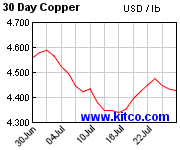
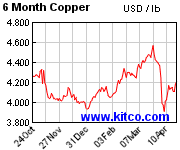
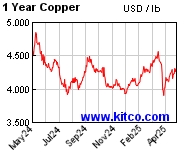
.

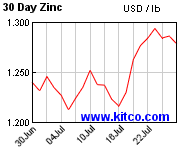
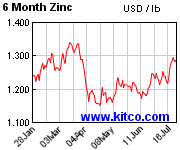
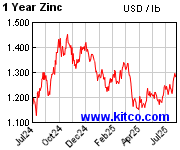
.

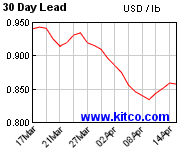
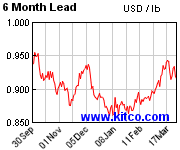
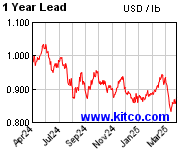
.
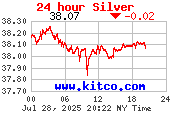
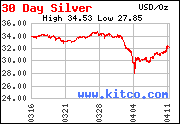
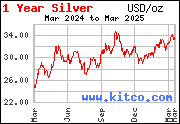
.
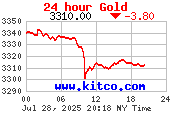
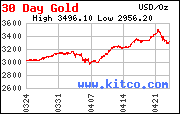
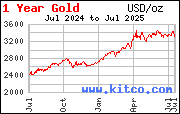
.
.




.




.




.



.



.
- Comodoro
- Mensajes: 980
- Registrado: Jue May 06, 2010 8:24 am
- Ubicación: LIMA
¿Quién está conectado?
Usuarios navegando por este Foro: No hay usuarios registrados visitando el Foro y 27 invitados
